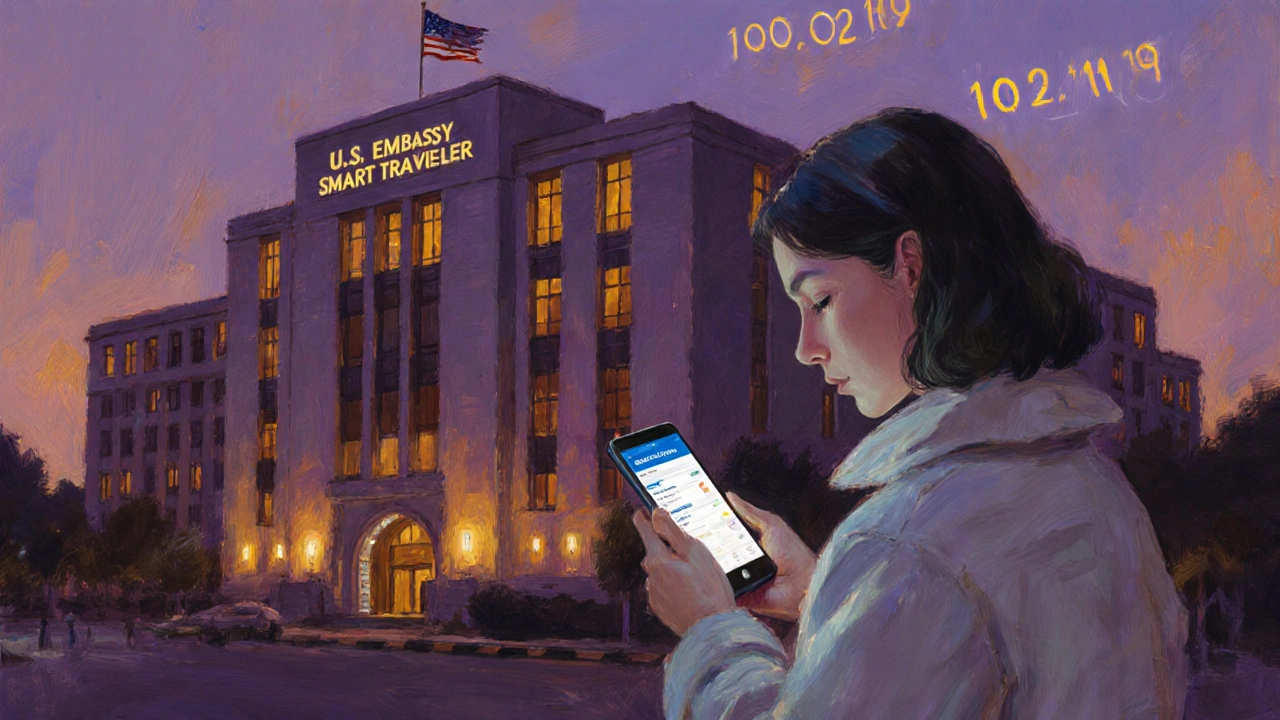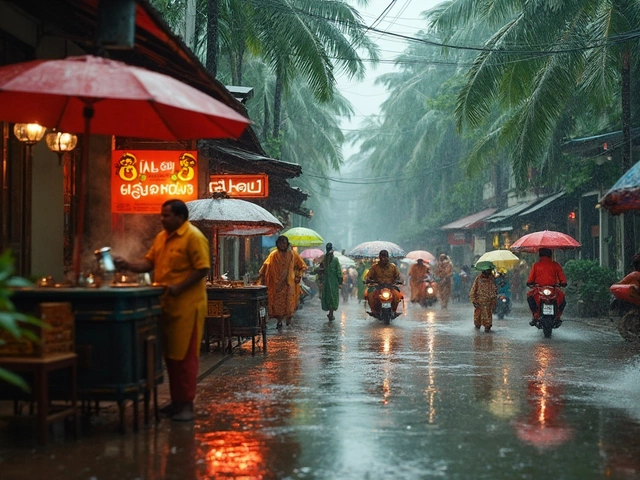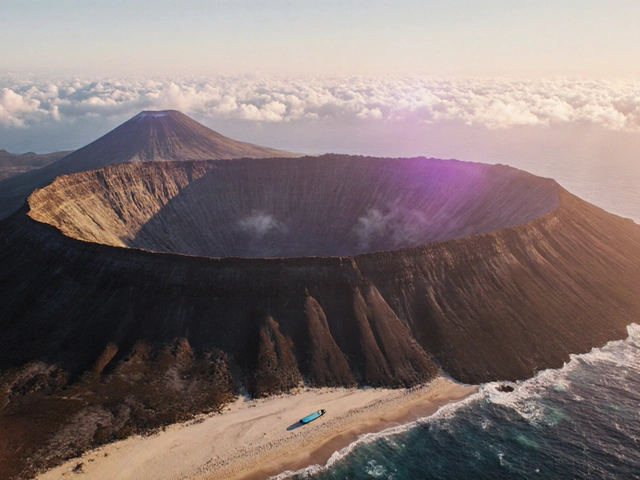India Travel Risk Calculator
Get a personalized risk assessment for your trip to India based on your destination, travel dates, and specific considerations.
Risk Assessment Results
Recommended Actions
Vaccinations Required
Emergency Contacts
Thinking about exploring the vibrant streets of Delhi, the majestic forts of Rajasthan, or the serene hills of Himachal? Before you pack your bags, you’ll want to know if it’s safe for US citizens to travel to India right now. This guide breaks down the latest advisories, health tips, on‑ground safety tricks, and essential resources so you can decide with confidence.
Current U.S. Travel Advisory for India
As of October 2025, the U.S. Department of State rates India at a Level 3 - Reconsider Travel. The rating reflects concerns over occasional civil unrest, traffic hazards, and pet‑friendly health risks in certain regions. https://travel.state.gov notes that major tourist hubs remain operational, but travelers should stay alert, especially during political rallies or large public events.
Visa and Entry Requirements
US passport holders need an e‑tourist visa (e‑TV) for stays up to 60 days, extendable to 180 days. The process is fully digital: fill out the application on the Indian Ministry of Home Affairs portal, pay the fee (approximately $25‑$100 depending on duration), and receive the visa by email within 72 hours.
- Passport valid for at least six months beyond your intended departure.
- Proof of onward travel (flight ticket or rail reservation).
- Recent photograph meeting the specifications (white background, 2 × 2 inches).
Remember that a visa does not guarantee entry; customs officers may still ask about your itinerary, accommodation, and purpose of visit.
Health Precautions & Vaccinations
India’s climate varies wildly, and so do health risks. The Ministry of Health and Family Welfare (India) recommends the following vaccinations for US travelers:
- Routine immunizations (MMR, Tdap, varicella, flu).
- Hepatitis A and B (especially for anyone planning to eat street food or stay in rural areas).
- Typhoid (single‑dose oral or injectable).
- Japanese encephalitis (if traveling to the monsoon‑prone regions of Uttar Pradesh or West Bengal).
Carry a basic medical kit with oral rehydration salts, antidiarrheal medication, and any personal prescriptions. Tap water is not safe to drink; stick to bottled water sealed with an intact cap.

On‑Ground Safety Tips for North India
North India draws millions of tourists each year, but certain safety pitfalls repeat. Below are proven strategies to keep your trip hassle‑free.
- Transport safety: The Delhi Metro is clean, reliable, and monitored by CCTV. Avoid unregistered auto‑rickshaws; negotiate fare before you hop in.
- Traffic awareness: Indian roads are chaotic. Pedestrians often share lanes with motorcycles and cows. Use crosswalks where available, but stay vigilant.
- Scams: In popular spots like Jaipur’s Bapu Bazaar, be wary of “too‑good‑to‑be‑true” jewelry deals. Insist on a receipt and compare prices with online listings.
- Night travel: Trains to and from Delhi operate safely, but some night buses in rural Rajasthan have been flagged by the Rajasthan Tourism Police. Opt for reputable carriers and keep luggage locked.
- Dress modestly: While major cities are cosmopolitan, conservatively dressed travelers face fewer unwanted attention, especially in religious sites.
Regional Risk Overview
Safety varies by state. The table below summarizes the most common concerns for US visitors in 2025.
| State | Travel Advisory Level | Key Risks | Recommended Precautions |
|---|---|---|---|
| Delhi | Level 2 - Exercise Increased Caution | Petty theft, traffic accidents | Use metro, keep valuables hidden, avoid lone night walks |
| Uttar Pradesh | Level 3 - Reconsider Travel | Communal tensions, road safety | Stay informed of local news, travel with reputable guides |
| Rajasthan | Level 2 | Scams in market areas, desert heat | Carry water, verify tour operator credentials |
| Himachal Pradesh | Level 1 - Exercise Normal Precautions | Mountain landslides during monsoon | Check weather forecasts, use licensed taxi services |
| Jammu & Kashmir | Level 4 - Do Not Travel | Political unrest, curfews | Postpone travel until restrictions lift |

Emergency Services & Consular Support
If you find yourself in trouble, the U.S. Embassy in New Delhi and the Consulates in Mumbai and Chennai are the first points of contact. The Bureau of Consular Affairs provides a 24‑hour helpline (+1 202‑555‑1234) for lost passports, medical emergencies, or legal issues.
Local emergency numbers:
- Police: 100
- Ambulance: 102
- Fire: 101
Quick Pre‑Travel Checklist
- Confirm your visa status and print a copy.
- Register your trip on the Smart Traveler enrollment page.
- Update travel insurance to cover medical evacuation.
- Pack a portable charger, universal plug adapter, and prescription meds.
- Carry an ID card besides your passport for local verification.
- Download offline maps of Delhi, Jaipur, and Shimla.
Following this checklist reduces surprises and lets you focus on the incredible sights-like the Taj Mahal’s sunrise, the pink city’s architecture, or the Himalayan vistas.
Do I need a visa if I’m only staying in India for a short layover?
Yes. Even for transit under 24 hours, a visa is required unless you qualify for a visa‑on‑arrival under a specific passport agreement, which the US does not have. Apply for an e‑tourist visa in advance.
Is it safe to travel alone as a solo female traveler in North India?
Solo female travel is common, especially in metropolitan hubs like Delhi and Chandigarh. Stick to well‑lit neighborhoods, use rideshare apps (Ola, Uber), and avoid isolated areas after dark. Joining group tours for remote sites adds an extra layer of security.
What health insurance coverage do I need for India?
Choose a policy that covers hospitalization, emergency evacuation, and COVID‑19 treatment. US insurers such as World Nomads or Allianz Global Assistance offer plans accepted in Indian hospitals.
How reliable is public transportation in North Indian cities?
Metro systems in Delhi, Chandigarh, and Lucknow are modern and safe. Buses are affordable but can be crowded; choose state‑run services over private minibusses for better safety records.
Where can I find up‑to‑date safety alerts while traveling?
The U.S. Department of State’s website and the Smart Traveler app provide real‑time alerts. Additionally, follow the Indian Ministry of Home Affairs Twitter handle for local advisories.



